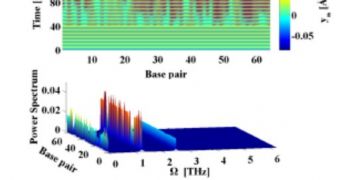Terahertz radiation occupies the wavelengths that connect microwaves to infrared and is currently considered to be one of the most promising areas of research out there. Over the past decade, more and more researchers have dedicated their work to this form of radiation, which has the amazing ability of penetrating through just about everything, including inanimate objects such as glass, paper, cloth, walls and other such things. It can also be used to “frisk” a human body from a distance, and to peer inside rooms, which makes it a potent monitoring tool.
However, on the downside, the negative effects that terahertz wavelengths may have on the human body are not entirely known. Evidence of how they influence DNA is flimsy at best, and a clear conclusion has yet to be drawn from available research. Those who argue that the radiation is not harmful say that the photons making it up are not energetic enough to break chemical bonds or ionize atoms and molecules, Technology Review reports.
“Some studies reported significant genetic damage while others, although similar, showed none,” Los Alamos National Laboratory (LANL) Center for Nonlinear Studies expert Boian Alexandrov, the leader of a research team looking into the effects of terahertz radiation, says. The team adds that the energy in these photons is not nearly as high as the ones in X-rays and ultraviolet light, which are perfectly capable of damaging our bodies over prolonged exposures. UV rays are known to trigger skin cancer.
The LANL team recently made a chilling discovery, when it found out that THZ radiation had the ability to essentially “unzip” double-stranded DNA, a feat that has massive implications, including the disruption of such processes as gene expression and DNA replication. Both of these are essential to life as we know it. The team argues that the radiation accomplishes its effects by means of tiny, resonant ones that it instills in the DNA molecules. While normal resonance is unable to cause “unzipping,” nonlinear resonances, of the type terahertz radiation creates, can.

 14 DAY TRIAL //
14 DAY TRIAL //